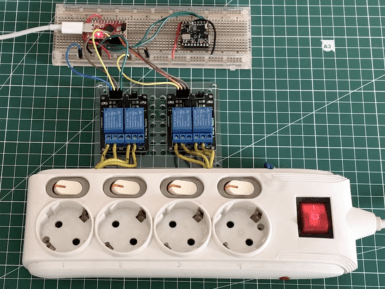
Arduino Tiny Machine Learning Kit
Ever wondered how to build a small intelligent device that reacts to sounds like a keyword being spoken, recognizes gestures like waving a magic wand, or even recognize faces? With this kit combined with the power of Tiny Machine Learning (TinyML) you can do all of that and much more! We want to show you how these possibilities can be part of your own tiny smart device!
Overview
The Tiny Machine Learning Kit, combined with the exciting TinyML Applications and Deploying TinyML on Microcontrollers courses that are part of the Tiny Machine Learning (TinyML) specialization from EdX will equip you with all the tools you need to bring your ML visions to life!
The kit consists of a powerful board equipped with a microcontroller and a wide variety of sensors (Arduino Nano 33 BLE Sense*). The board can sense movement, acceleration, rotation, barometric pressure, sounds, gestures, proximity, color, and light intensity. The kit also includes a camera module (OV7675) and custom Arduino shield to make it easy to attach your components and create your very own unique TinyML project. You will be able to explore practical ML use cases using classical algorithms as well as deep neural networks powered by TensorFlow Lite Micro. The possibilities are limited only by your imagination!
“The Future of Machine Learning is Tiny and Bright. We’re excited to see what you’ll do!”
Prof. Vijay Janapa Reddi, Harvard University and Pete Warden, Google
*For us to be able to have this kit back in stock we produced a Nano 33 BLE Sense without the HTS221 sensor (temperature and humidity), this change does not affect this kit’s usage and/or content experience. This board is fully compatible with the kit’s documentation.
Tech specs
The Tiny Machine Learning Kit includes:
- 1 Arduino Nano 33 BLE Sense board
- 1 OV7675 Camera
- 1 Arduino Tiny Machine Learning Shield
- 1 USB A to Micro USB Cable
Conformities
Resources for Safety and Products
Manufacturer Information
The production information includes the address and related details of the product manufacturer.
Arduino S.r.l.
Via Andrea Appiani, 25
Monza, MB, IT, 20900
https://www.arduino.cc/
Responsible Person in the EU
An EU-based economic operator who ensures the product's compliance with the required regulations.
Arduino S.r.l.
Via Andrea Appiani, 25
Monza, MB, IT, 20900
Phone: +39 0113157477
Email: support@arduino.cc
Documentation
Get Inspired

As Jallson Suryo discusses in his project, adding voice controls to our appliances typically involves an internet connection and a smart assistant device such as Amazon Alexa or Google Assistant. This means extra latency, security concerns, and increased expenses due to the additional hardware and bandwidth requirements. This is why he created a prototype based on an Arduino Nicla Voice that can provide power for up to four outlets using just a voice command. Suryo gathered a dataset by repeating the words “one," “two," “three," “four," “on," and “off” into his phone and then uploaded the recordings to an Edge Impulse project. From here, he split the files into individual words before rebalancing his dataset to ensure each label was equally represented. The classifier model was trained for keyword spotting and used Syntiant NDP120-optimal settings for voice to yield an accuracy of around 80%. Apart from the Nicla Voice, Suryo incorporated a Pro Micro board to handle switching the bank of relays on or off. When the Nicla Voice detects the relay number, such as “one” or “three," it then waits until the follow-up “on” or “off” keyword is detected. With both the number and state now known, it sends an I2C transmission to the accompanying Pro Micro which decodes the command and switches the correct relay. To see more about this voice-controlled power strip, be sure to check out Suryo’s Edge Impulse tutorial.









